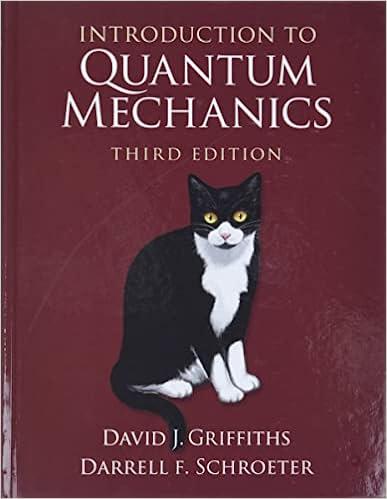Coherent states of the harmonic oscillator. Among the stationary states of the harmonic oscillator (Equation 2.68) only
Question:
Coherent states of the harmonic oscillator. Among the stationary states of the harmonic oscillator (Equation 2.68) only n = 0 hits the uncertainty limit (σx σp = ћ/2); in general, σx σp = (2n + 1) ћ/2, as you found in Problem 2.12. But certain linear combinations (known as coherent states) also minimize the uncertainty product. They are (as it turns out) eigenfunctions of the lowering operator:
![]()
(the eigenvalue α can be any complex number).
(a) Calculate (x), (x2), (p), (p2) in the state |α>.
(b) Find σx and σp; show that σx σp = ћ/2.
(c) Like any other wave function, a coherent state can be expanded in terms of energy eigenstates:

Show that the expansion coefficients are

(d) Determine c0 by normalizing |α>.
![]() (e) Now put in the time dependence:
(e) Now put in the time dependence:
![]()
and show that |α (t)} remains an eigenstate of α⇁ but the eigenvalue evolves in time:
![]() So a coherent state stays coherent, and continues to minimize the uncertainty product.
So a coherent state stays coherent, and continues to minimize the uncertainty product.
(f) Based on your answers to (a), (b), and (e), find (x) and σx as functions of time. It helps if you write the complex number α as

for real numbers C and ϕ. In a sense, coherent states behave quasi-classically.
(g) Is the ground state {|n = 0}) itself a coherent state? If so, what is the eigenvalue?
Problem 2.12
Find (x), (p), (x2),(p2) and (T), for the nth stationary state of the harmonic oscillator, using the method of Example 2.5. Check that the uncertainty principle is satisfied.
Equation 2.68

Step by Step Answer:

Introduction To Quantum Mechanics
ISBN: 9781107189638
3rd Edition
Authors: David J. Griffiths, Darrell F. Schroeter





